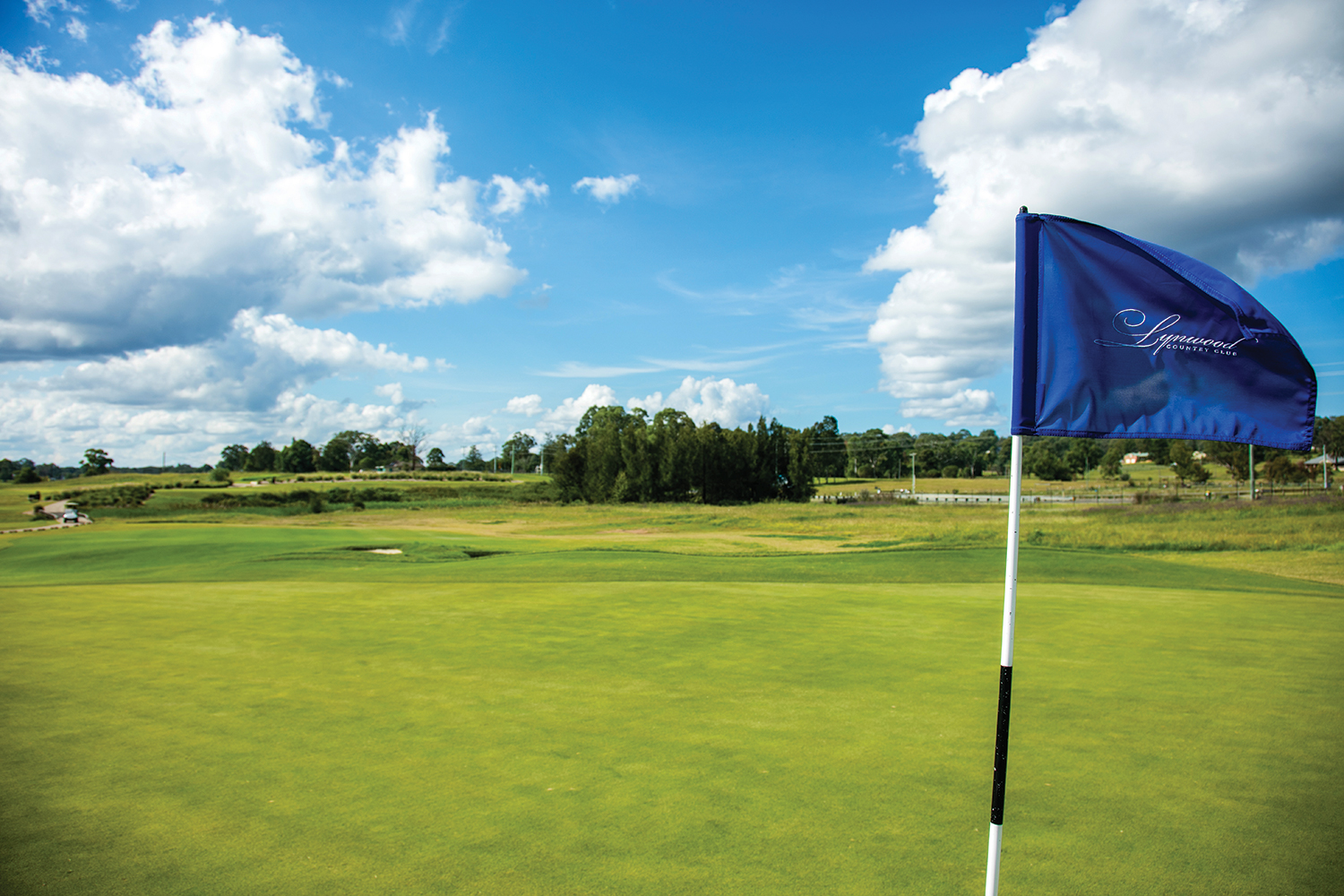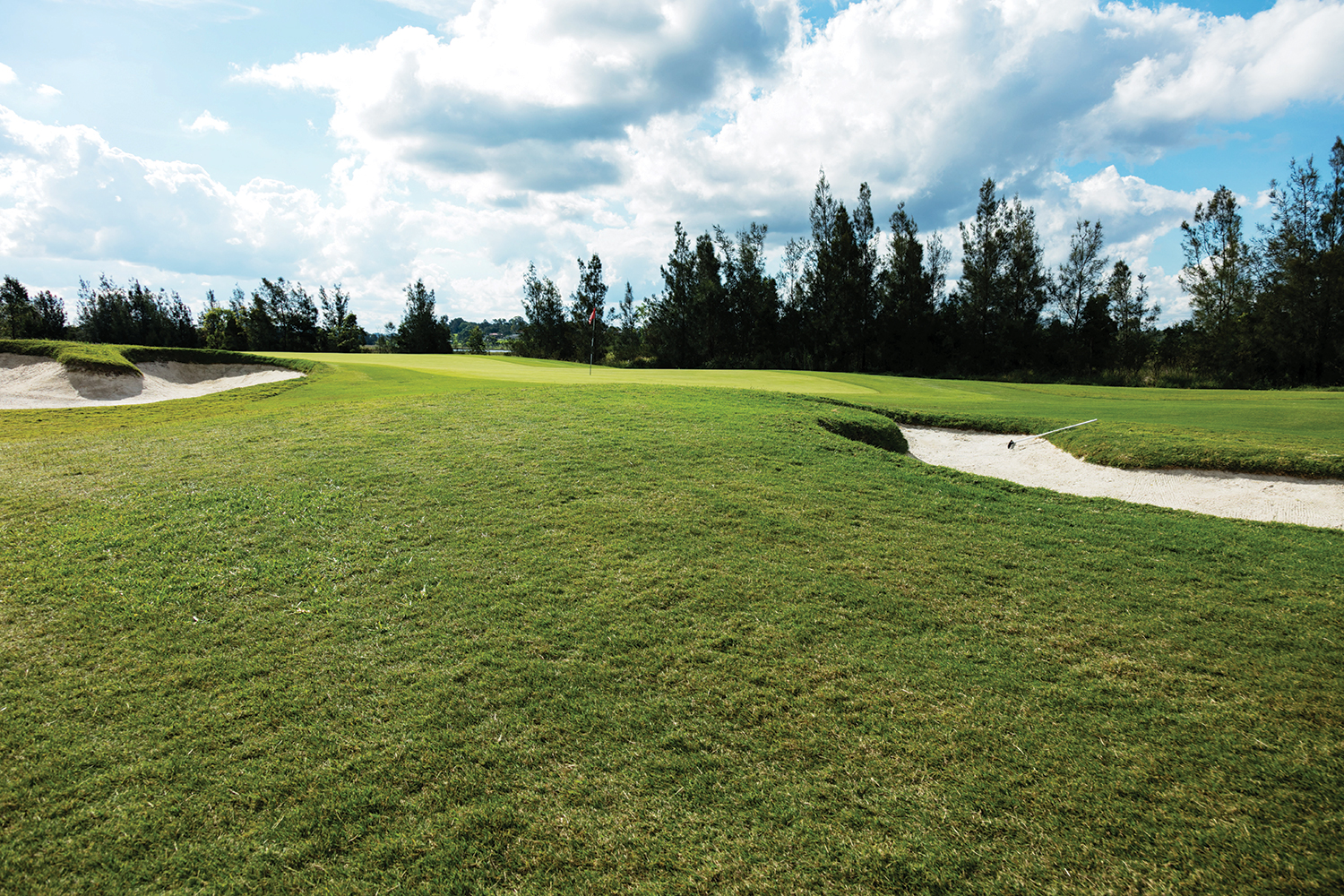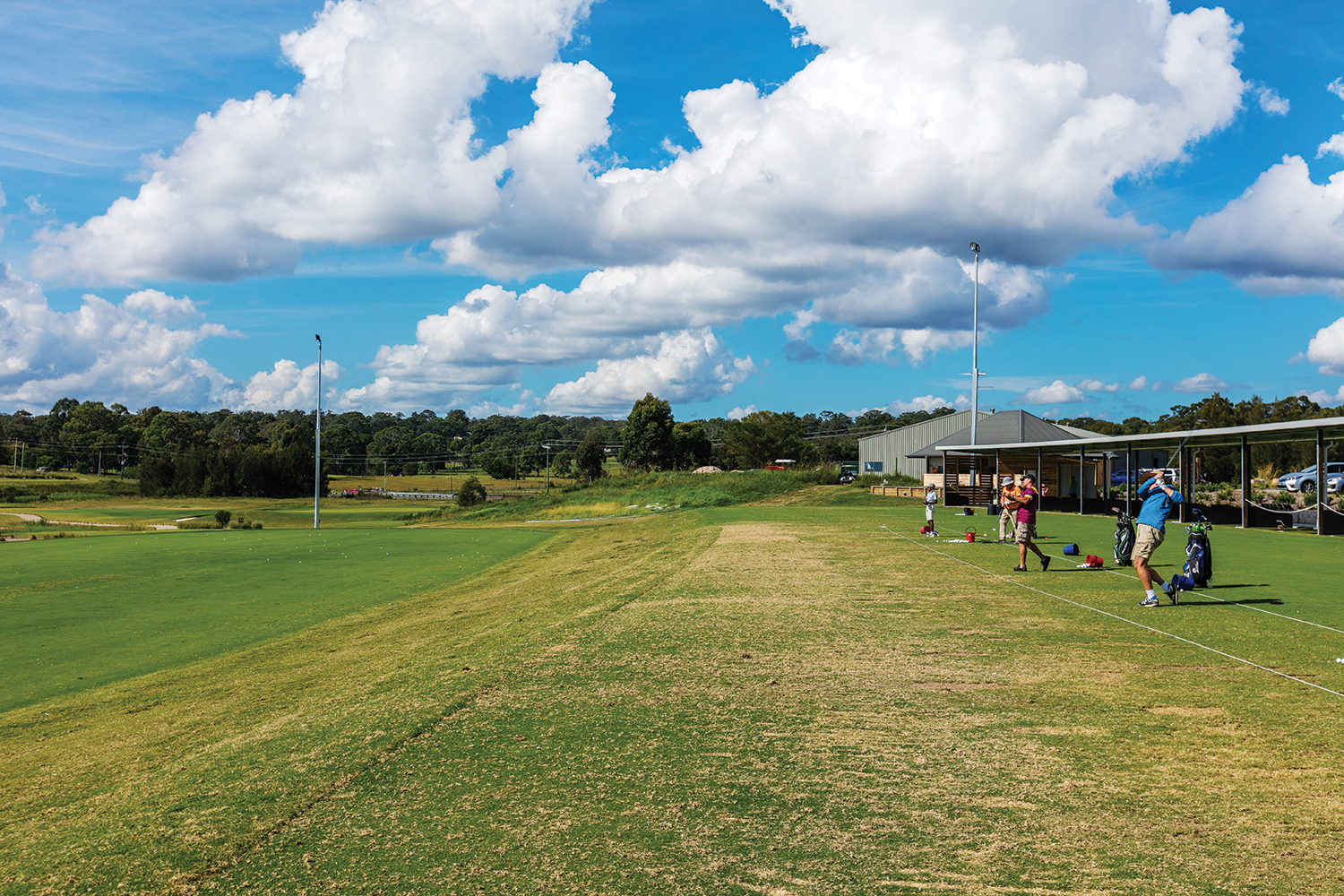The Big Picture
SYDNEY hasn’t been inundated by new golf course construction in the past decade, but what activity has taken place centred on the city’s sprawling north-western fringe. And first among them was Lynwood Country Club, which cut its opening ribbon well ahead of three-time New South Wales Open venue Stonecutters Ridge and the Bungool course at nearby Riverside Oaks.
Lynwood’s is an interesting site and story. Since beginning as Hawkesbury Valley Country Club in 1963, the golf club now known as Lynwood has taken on no fewer than nine names along with multiple locations. Most recently, it was known as Kellyville Country Club before the move to its present site and a name change to Lynwood took place in 2008. (The club takes its name from historic Lynwood House, a colonial-style home built circa 1814 that occupies one of the highest points on the property.)

During 2009, the new Graham Papworth-designed course opened nine holes at a time at Pitt Town, one of the five historic towns established by Governor Macquarie in 1810. Situated on mostly flat, low-lying land with Pitt Town Lagoon as a neighbour and the Blue Mountains as a distant but visible backdrop, the almost-treeless site is broad and exposed. Positioned 50 kilometres from the Sydney CBD, it’s one of those nicely located courses that takes you out of town without requiring a packed lunch to get there.
Among Lynwood’s strengths is an excellent and sizeable practice fairway, a feature so often overlooked when it comes to new builds. Although detached from the clubhouse precinct, establishing a quality range and short-game practice facility added extra dimensions to the total package. The new colonial-style clubhouse was adequate and the course even more so. It appeared Lynwood’s future was secure … or so it seemed.
Over time the club fell into financial difficulty before a lifeline came in December 2014 when Lynwood became part of the Castle Hill RSL Group, which consists of the parent entity, the Castle Hill RSL Club, plus C2K Fitness and Aquatic Centre and the Parramatta RSL Club. The move solidified the club’s financial situation, while bringing several strong entities within the region into the fold.
The objective at Lynwood became one of creating a golf facility second to none, and a destination to attract golfers from across Sydney. The club also engaged popular former touring professional Paul Gow, who lives in the area and uses Lynwood as his practice base, to suggest course changes in concert with Papworth. Much like the other club featured this issue (Parkwood on Queensland’s Gold Coast, see here), the golf course became just one part of the future overall picture.

“There are two driving forces behind the changes we’ve got planned for Lynwood Country Club,” David O’Neil, chief executive of Castle Hill RSL Group, explained shortly after the acquisition. “The first is to improve the golfing facilities and amenities to benefit the golfing community. Our plans involve rerouting the course, adding extra tees and greens, and extending the irrigation system. All-weather driving range bays will be added to complement the existing 160 metres of couch hitting area and the club will build a new pro shop and high-performance golf academy – equipped with state-of-the-art technical equipment to analyse and improve a person’s game.
“Secondly, we want to develop the clubhouse to better serve the wider community,” O’Neil said. “Currently, the community is using the clubhouse, but we want to extend that engagement further so we’re thinking well and truly outside the square.”
Ambitious plans indeed, but ultimately fruitful ones. Those out-of-the-box plans included establishing a petting zoo, a huge children’s playground and refurbishing the clubhouse to create a hub for local residents, social clubs, sporting and family groups as well as golfers. In the two years since, the group has fulfilled each promise and delivered on every concept.
How now, Paul Gow?
Papworth’s design requires some cerebral deciphering. At first look, it’s easy to be seduced by the mostly spacious playing corridors and generally open fairways. Only once the tee peg goes into the ground do golfers’ eyes pick up the subtleties of the layout.

For instance, the chains of ponds and creeks that trickle through the 93-hectare site appear peripheral in many instances until you note how the land’s slight undulations want to feed balls towards them. A common scenario at Lynwood is to stand on the tee and spot a creek or pond along one side of the fairway but not see a perhaps partially obscured second water hazard along the opposite flank, possibly where the land also naturally falls. Throw in a smattering of bunkers, several more overt wetlands and hazards across the 6,305-metre layout, along with artfully contoured green complexes, and you have a complete test.
Two primary changes took place under Gow’s advisement. Firstly, the long par-3 eighth hole was eliminated and the par-5 ninth cut in half to spawn two holes. The new dogleg-left par-4 eighth hole wraps around three fairway bunkers and an out-of-bounds fence before rising to the course’s newest green. The revamped par-3 ninth begins from an elevated tee and plays almost at right angles to the approach angle of the previous incarnation. The ominous pond that had to be carried to reach the green now sits to the right but still dominates the view. The loss of a par 5 during this redesign necessitated the 429-metre uphill par-4 18th to grow into a 506-metre par 5, which the closer kind of played like for almost every golfer anyway.
![The 14th is a sleeper par 3, located near the high-quality practice facilities [above].](http://australiangolfdigest.com.au/wp-content/uploads/2017/08/Lynwood-Country-Club_04.jpg)
More course changes will come in time, primarily the raising of several teeing grounds to aid drainage and improve the view of what lies ahead.
“The eighth is a good indication of how some of the new tees should look,” Gow says of the new tee, which is two or three metres above fairway level. “It sits so much higher and gives players a better look at the shot they’re facing.”
Other highlights abound. The cute 133-metre third plays uphill to a green with its highest point in the centre, while the drive from the par-4 seventh is arguably the best example of Lynwood’s hidden water hazards. One of the best holes is the 352-metre 10th, where three expertly placed fairway bunkers define the strategy required from the tee before a greenside pond awaits any approach shot drifting right of the putting surface.
While many holes appear similar, each owns a personality and strategy all of its own. The golf course at Lynwood offers multiple reasons to visit – much like the entire facility.
THE DETAILS
Lynwood Country Club
4 Pitt Town Bottoms Rd, Pitt Town NSW 2756
(02) 4580 2800
www.lynwoodcc.com.au




